
Drip campaigns (aka email sequences) are a powerful way to re-engage users using a linear fashion. Many email marketers use this technique…
In this guide, I'm going to show you how to use Google Sheets to create a task management tool that will serve you for a long time - at least until you're making enough money to justify one of the fancier solutions.

Since you're using a Google Sheet, you get the bonus of being able to directly link it to a Google Form. To set this up, go to the "Tools" option in the menu bar and select "Create a form". This will take you to a brand new Google Form which is automatically be connected with your Google Sheet.
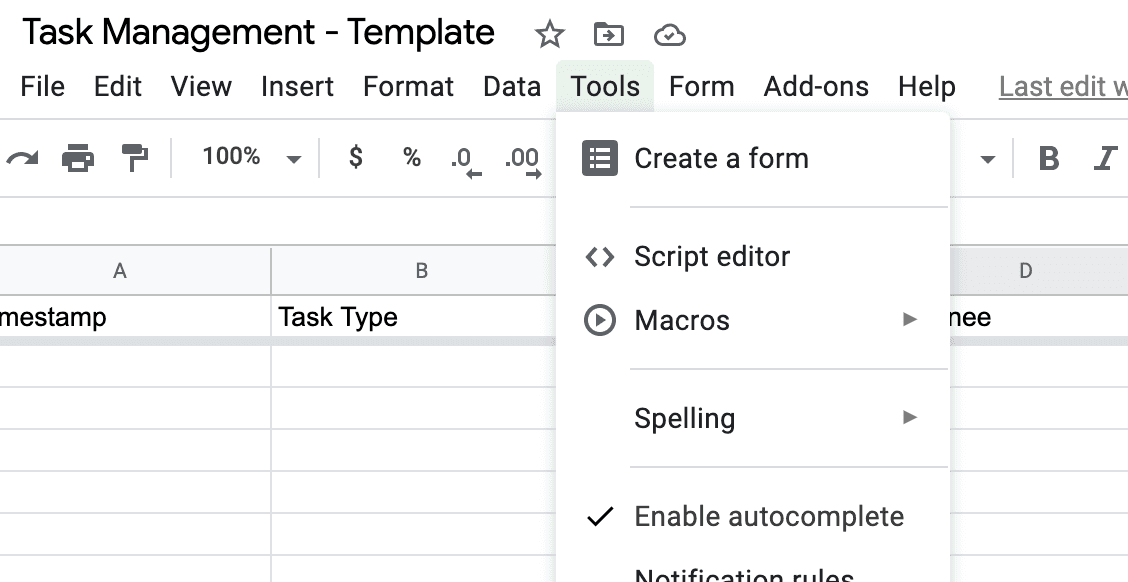
Fill out your form with the questions you need to capture for each task. Typical things would be: "Title", "Description", "Assignee", "Due Date", and "Status". Google Forms has a bunch of different options for question types, so feel free to take your time playing with the form. Try out some single-select questions, paragraph questions, dropdowns, date fields, etc.
Once you're done with your form, head back over to your Google Sheet. You'll notice that you have 3 tabs in total now. The new one is called "Form Responses 1" and it's some that was auto-generated to capture and entries to the Google Form you just make. Go ahead and rename that to "Tasks" for now.

If you added "Status" to your form, great. If you didn't, you'll have to add it as a new column - do that under your "Tasks" tab.
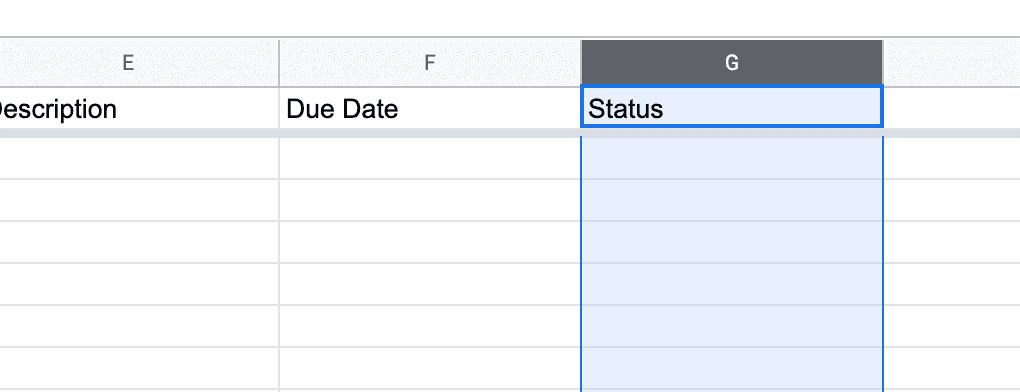
Once you have a "Status" column, it's time to fool-proof the field by making it into a dropdown. Click on the "Data" option in the menu bar and select "Data Validation"
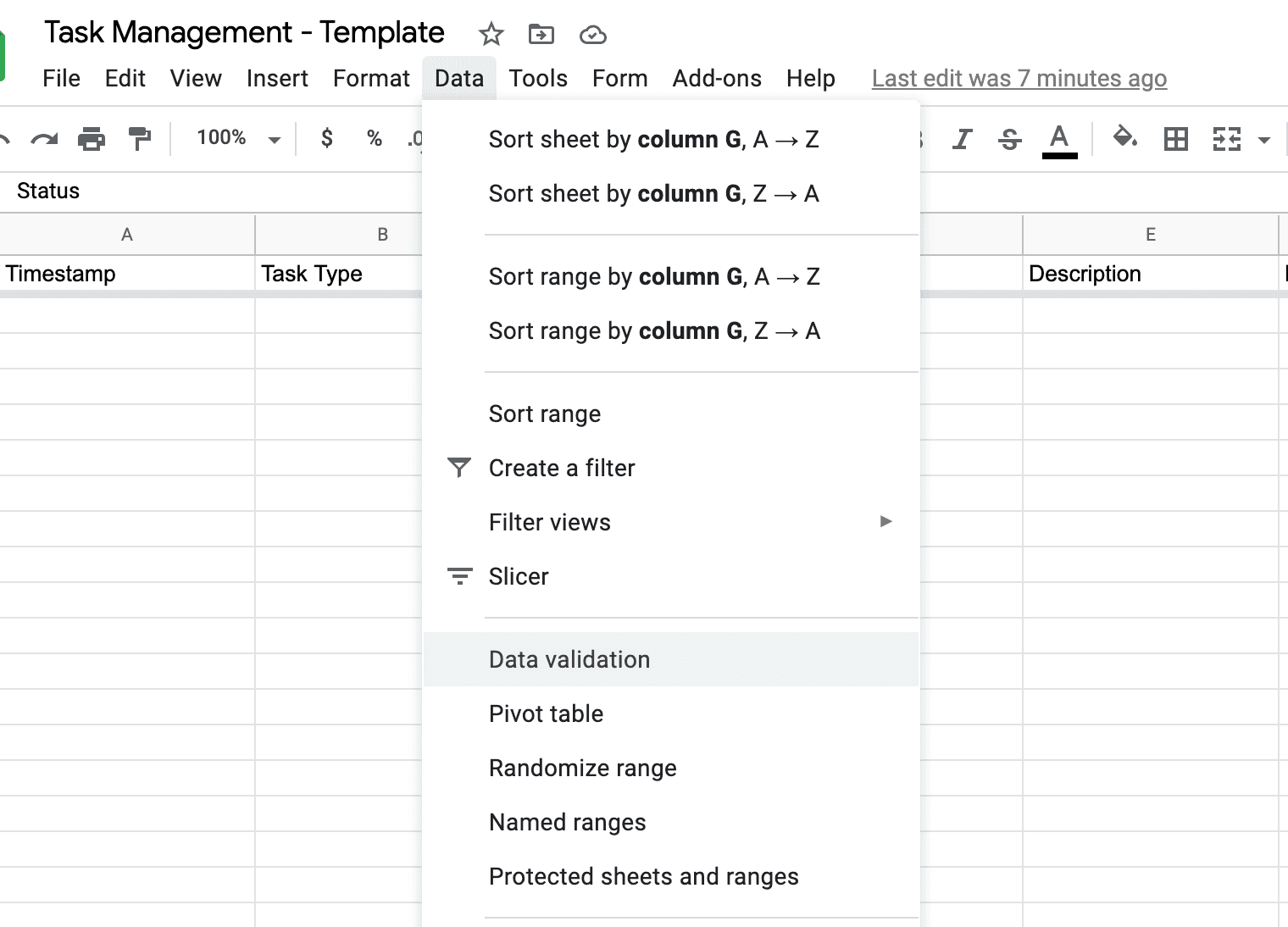
For the "Cell range" field, put in the column range for your "Status" field. Make sure to start from row 2 so that you don't apply the dropdown to your column header. In your "Criteria" field, select "List form a range" as the option and then put in your status options into the input field - using commas to separate each option.

Congrats! You now have a dropdown for your status field that will help keep everything clean even if you have multiple people working in here.
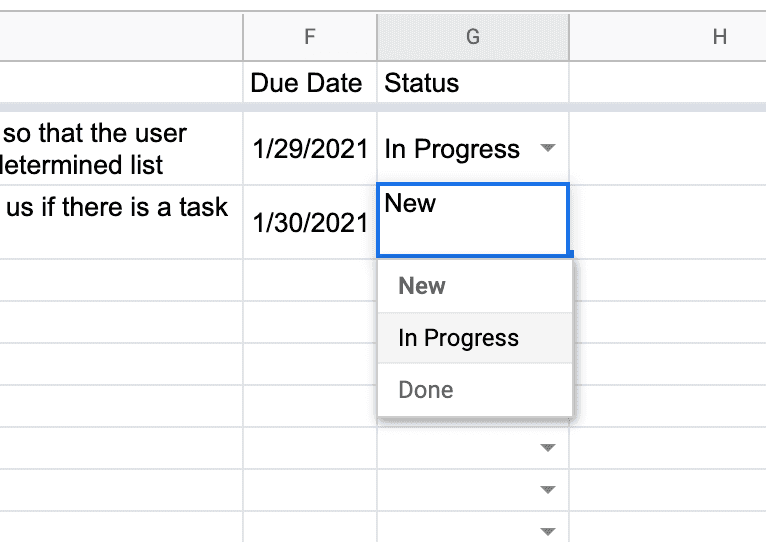
Now that you have a clean data set, you can report off of it cleanly. In this guide, we'll go through a basic way to report on tasks - count of tasks by assignee and status. The output is going to look like a matrix table
First, let's navigate back to the "Dashboard" tab. This is where you're going to put all of the aggregated metrics. Once you're here, go to the menu bar, select the "Data" option, and then select the "Pivot table" option.
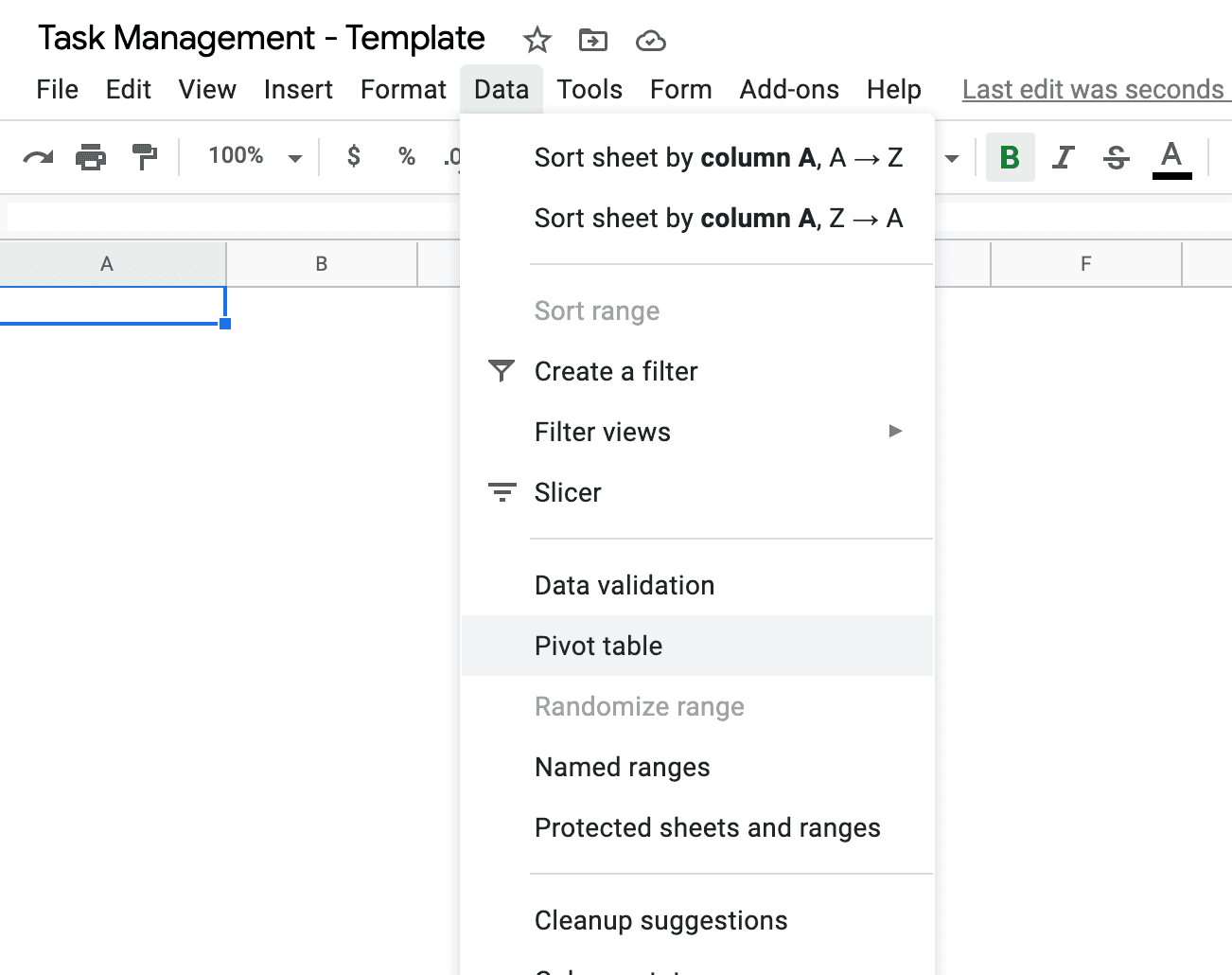
In the "Create pivot table" form, in the "Data Range" field, put in the location of your tasks - it should be something like "Tasks!A:H".
Then select to insert it into the "Existing sheet" and put in "Dashboard!A1" as the input. Once you hit the create button, it'll generate a pivot table that reads off of your tasks list. On the right hand side, you'll see a bunch of options. Select "Assignee" as your Rows, "Status" as your Columns, and "Status" as your Values.
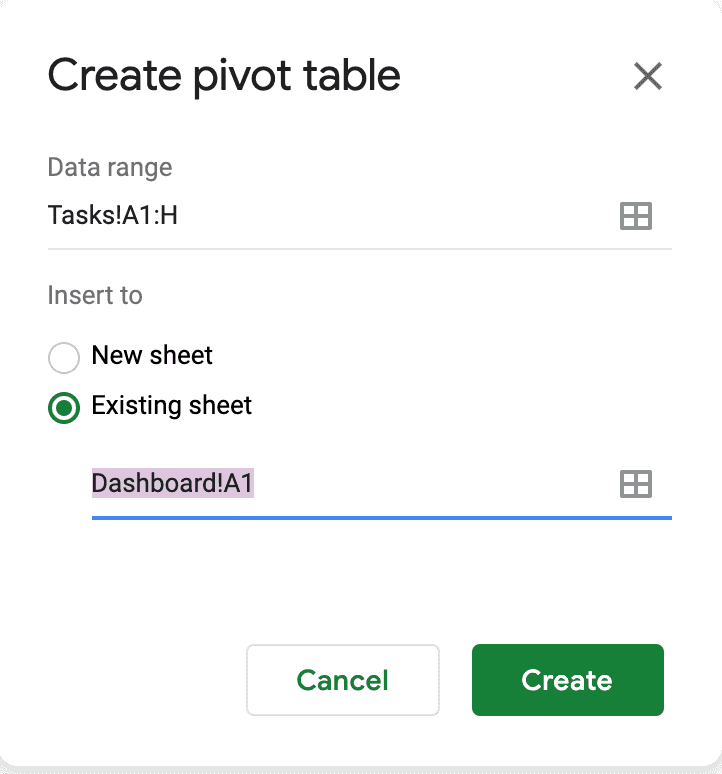
You'll probably see that there is a blank column for your statuses. to remove that, select the "Filter" option and deselect "(Blanks)" from the dropdown.

There you have it, a basic task management tool right in Google Sheets. There is a lot more that we can do with Google Sheets to make your task management tool robust and sophisticated.
In our next guide, we'll use it to manage all of our dropdowns in one place. Read our guide on advanced dropdowns